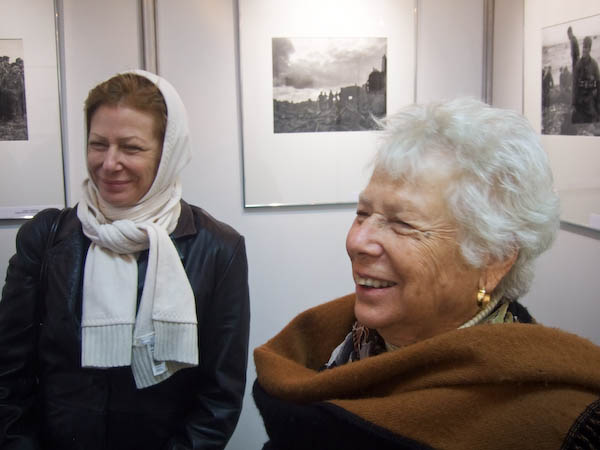When I taught photography, many of our best students were women. Perhaps over the years there were half a dozen who I thought really had potential as photographers, but I can only recall having that same feeling about one male student. As it happens he is the only one who has gone on to become really successful as a photographer, though others who passed through our classes with less obvious photographic talent have made a living behind a camera. As Eric Barker puts in in his Time article on careers, “Persistence trumps talent”. Or perhaps it is rather harder for people who have a definite personal vision find to produce work that fits the dimmer perception of others.
Many of the contemporary photographers whose work I admire are women. I’ve never thought to check what percentage, but certainly many come to mind, not because they are women but because of their work. Where perhaps in the first hundred of so years of the history of photography women were notable exceptions – because of wider societal restrictions and conventions – this is no longer the case. And some of those exceptions were truly notable – including such examples as Julia Margaret Cameron, Berenice Abbott and Dorothea Lange. Wikipedia has an interesting list.
When I was teaching and when I was writing about the medium for a living I wrote about and used examples from the work of many women photographers, some well-known, others less so. Many of our students were inspired by the work of Diane Arbus, Cindy Sherman, Nan Goldin, Sally Mann, Jo Spence, Fay Godwin and others – as well as that of male photographers.
I wrote as well about others who I felt deserved to be better-known – such as Nelly’s and Grete Stern (neither well-served on the web) and about a few others who were well-known but whose work I could not relate to or felt rather lacking in photographic interest. Although I mainly wrote about things I liked, I was running a site which I felt had to provide at least basic information across the whole range of things photographic (though I drew a line at so-called “glamour”.) But there were a few women photographers whose reputation seemed to me more connected with feminist politics than artistic production, though this was and is dangerous territory for male comment and I largely restricted myself to giving the facts and links rather than opinions in their cases.
It was a link to an article posted by Alan Griffiths of Luminous Lint that started me thinking about “women photographers” again. In Hyperallergic, Alex Heimbach (a freelance writer and graduate student at NYU) reviews a recent book with the title ‘Women Photographers from Julia Margaret Cameron to Cindy Sherman‘ under the heading How Not to Write About Women Artists.
The photographers – who are arranged alphabetically, itself a curious choice, begin chronologically with Anna Atkins, who, while an important figure in the history of photography, was probably not a photographer. Her Photographs of British Algae: Cyanotype Impressions, its first installment published in 1843, is considered to be the first photographically illustrated book, using the cyanotype process invented the previous year by her friend Sir John Herschel and the photogenic drawing technique she had learnt from another friend, a Mr Talbot. Quite likely she had learnt his calotype process from him as well, and may have been the first woman photographer, but no evidence of this remains. The Wikipedia article on her provides a rare link to a piece I wrote about her work in 2005, rather a flashback for me.
Among the 55 photographers in the book by Boris Friedewald listed on the contents page (which you can view on the ‘Look Inside!’ page at the Amazon link above) are around 40 that I have at some time or other written about, one I know personally, half a dozen I’ve not heard of and a similar number who I feel certainly don’t deserve inclusion. There are quite a few – including Atkins who perhaps fall outside the remit of the title, the others being from post-Sherman generations. You can also see the pages on Berenice Abbott and Eve Arnold in the preview.
But the article by Heimbach has some more serious criticisms. As she writes; “it’s impossible to imagine an equivalent book titled Men Photographers: From Eugène Atget to Jeff Wall.” And while projects like these ideally “serve to illuminate lesser-known artists, who may have been discounted because of their gender (or race or sexual orientation or class)“, too often as seems to be the case with this book “their thoughtlessness generally renders them pointless at best and misogynistic at worst.”

Nina (left) and Naomi Rosenblum with pictures by Walter Rosenblum, 2007, Peter Marshall
There is more to her argument than this, and the article is worth careful reading, and she contrasts its approach with that of Naomi Rosenblum‘s A History of Women Photographers, (incidentally first published by Abbeville Press in 1994, rather than 2010), a book I used, together with Rosenblum‘s A World History of Photography in my teaching.) As Heimbach says “Rosenblum’s book aims not only to highlight the work of female photographers, but also to dig into what their gender means for their lives and careers. Rosenblum offers not just a who but a why.”